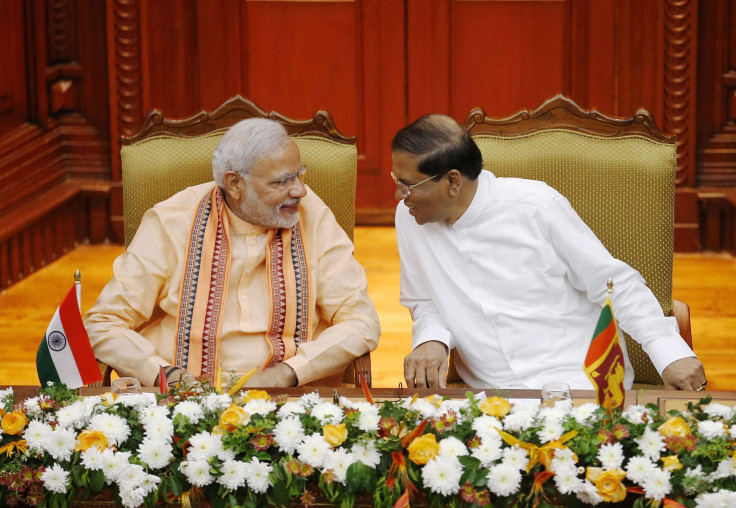India, Sri Lanka Sign Key Pacts During Narendra Modi's First Visit

India and Sri Lanka signed several bilateral pacts on Friday after Indian Prime Minister Narendra Modi arrived in the country on his maiden visit. Modi's two-day trip comes weeks after Sri Lanka’s new President Maithripala Sirisena visited India on his first official trip.
Modi’s visit to Sri Lanka is being seen as an attempt to offset China’s growing influence in the island nation. Last month, during Sirisena’s visit to India, the two countries signed a civil nuclear cooperation deal, signaling a strengthening of bilateral relations. Modi is also scheduled to address Sri Lanka’s parliament on Friday.
“I am conscious of the significance of this visit. It is the first standalone bilateral visit to Sri Lanka by an Indian Prime Minister since 1987,” Modi said, at a press conference in Colombo, after meeting Sirisena.
During his visit to Sri Lanka, which comes after his recently-concluded trips to Seychelles and Mauritius, the two countries signed an agreement to simplify bilateral trade by increasing cooperation between customs authorities. “Our trade has seen impressive growth over the past decade. I am aware of your concerns about trade with India. As I said in Delhi, we will try and address them,” Modi said.
Modi also announced that India will provide Sri Lankan tourists with a visa on arrival from April 14, in order to “encourage people-to-people contacts, improve connectivity, and increase tourism.”
However, the two countries have frequently clashed over the arrest and detention of fishermen caught crossing territorial waters. Last week, Ranil Wickramesinghe, the Sri Lankan prime minister, appeared to justify the shooting of Indian fishermen who ventured into Sri Lankan waters.
“We discussed the fishermen’s issue. This complex issue involves livelihood and humanitarian concerns on both sides. We should handle it from this perspective,” Modi said, adding that there is a need to find a “long-term solution” to the problem.
Modi also announced that the Reserve Bank of India -- the country’s central bank -- had signed a $1.5 billion currency-swap agreement with the Central Bank of Sri Lanka to keep the Sri Lankan rupee stable.
On Saturday, he is expected to visit the Tamil-dominated northern Jaffna region, which was one of the worst-affected parts of the country in the nearly three-decade-long civil war that ended in 2009.
© Copyright IBTimes 2024. All rights reserved.






















